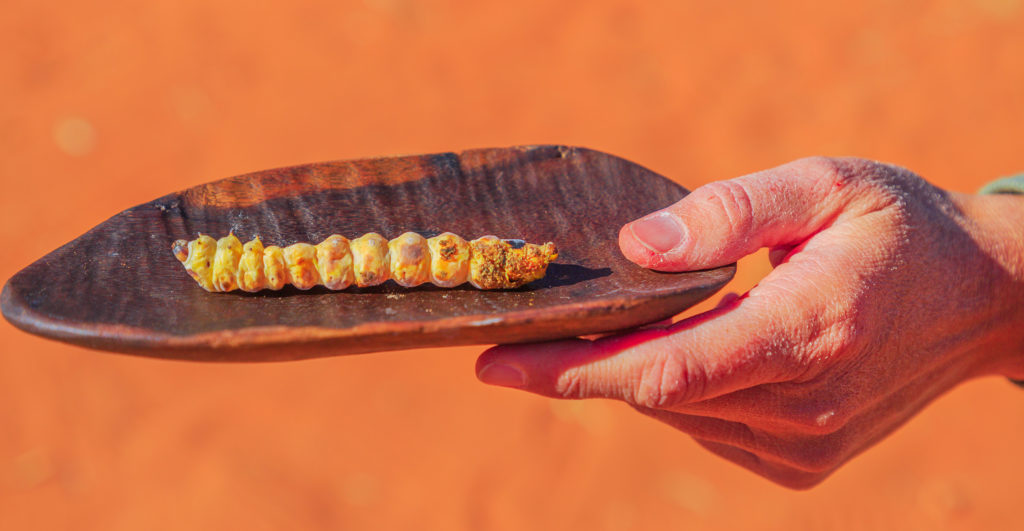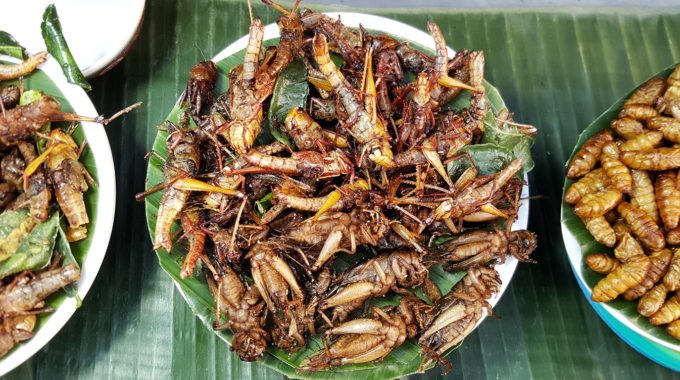Insects: why we’re not eating them
Two lecturers in nutrition asked hundreds of Australians whether they would eat insects, and most of them said yes. So, if we’re not squeamish, what’s really holding people back?
Insects are sustainable, nutritious and delicious. More than two billion people eat them worldwide, mostly in the tropics. They’ve also been a staple in Indigenous Australians’ diets for tens of thousands of years. Yet eating insects isn’t mainstream in Australia. Why?
We surveyed 601 Australians on their experience with, and attitude towards, edible insects. Our findings offer insight into what might convince people to add insects to their diet. Importantly, we found Australians aren’t deterred by the “ick” factor of eating insects. In fact, they’d be willing to try them as a protein alternative if not for a “lack of opportunity”.
Of the adults we surveyed, 56.2 percent reported they would be “likely” to eat insects in the future. This figure increased to 82.2 percent among those who had already tried them.

Missed opportunities
Insects don’t commonly feature on Australian menus. However, according to the CSIRO, Indigenous Australians have traditionally consumed at least 60 insect species. These include witjuti grubs, bogong moths and honey pot ants.
The ancient Romans and Greeks ate insects, too. Westernised countries may have lost their taste for edible insects during the shift from the hunter-gatherer lifestyle to agriculture and urbanisation. Insects went from being a staple food to being pests that destroy crops. This may have prompted a shift in our attitudes towards eating them.
Research conducted with older Australians has revealed a tendency to view the practice as disgusting and incompatible with their personal beliefs. This raises the concern there may be a reluctance for edible insects to return as a normalised, viable protein alternative.

As it turns out, most people aren’t that squeamish
Our research (mainly with participants aged 25 to 44 years) shows Australians have begun to adopt a more positive outlook towards insect-based foods.
Of those surveyed, 35 percent had previously tried insects, most commonly crickets and grasshoppers. And people who had already tried them were also more open to eating them again. This suggests we can develop a “taste” for bugs. Of those who hadn’t tried them, only 16 percent reported “disgust” was holding them back.
This paradigm shift may be related to people expressing greater concern for the environmental cost of food as well as an increased interest in healthy eating habits.
Participants also said they’d be willing to eat insect-based products if it was easier to find out how such foods are beneficial, both from a nutrition and sustainability standpoint.
They said endorsements from governing bodies, as well as more prominence of edible insects in mainstream media, would boost their interest in eating insects. “Try before you buy” promotions would also increase their likelihood of eating them.
For those willing to give insects a go, insect-based flours (such as in bread and biscuits), chocolate-coated ants and crickets were the top choices. However, not all insect species generated such a buzz. Moths and fly larvae were not quite so appealing. Still, a shift towards a willingness to try insects is promising for Australia’s edible insect market.

Embracing future foods
With the global population still growing, we will need alternative sources of protein to sustainably meet future food production requirements.
The demand for protein is on the rise. According to the UN Food and Agriculture Organisation, it will have to increase by 76 percent by 2050. However, our planet’s finite resources limit the production of traditional proteins. Edible insects have potential as an important future food, offering a nutritious protein source that’s more sustainable to produce. Their production requires less land, energy and water.
This article was written by Jessica Danaher, Lecturer in Nutrition, RMIT University; and Lisa Newman, Lecturer in Nutrition, RMIT University; and was originally published by The Conversation. The article has been lightly edited for style and content.









